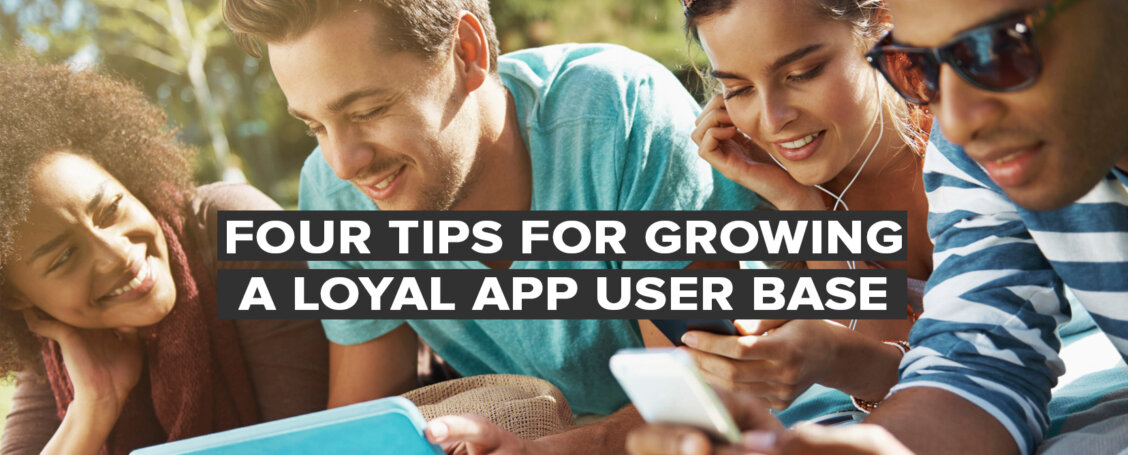
Four Tips for Growing a Loyal App User Base
Acquiring app installs is an important first step in building a mobile business, but it only a start. Growing a successful mobile business requires generating high quality users who not only install your app, but use it regularly. For most mobile marketers of non-gaming apps, user retention is a real challenge, with only 7% of people who open an app once still using it seven days later, according to the latest data from Swrve.
As former Senior Director of Marketing at Activehours, I’ve seen first-hand that the more time people spend in an app, the more likely they are to convert into a loyal user. But getting a new user to engage, especially with non-gaming apps, requires a well-designed re-engagement strategy. If you have yet to invest in building out your mobile re-engagement plan or are looking for ways to make your strategy more effective, below are four tips to help you get started.
Make your app easy to start using
Your users install your app for a reason – they’re interested in using the product or service you provide. Don’t make it unnecessarily difficult for new installs to start using your app or they will look for a better solution. Remember, only 7% of people continue using an app after 7 days. Streamlining the onboarding experience makes it much more likely that your new users will engage more with your app.
One way to do this is to highlight how the app works in your ad creative, push notifications, and in-app messaging. When someone installs your app and it works just like they expect it to, you have a much better chance of turning them into a loyal user.
Understand why people stop using your app
The first step to improving user engagement with your mobile app is pinpointing where in the funnel people are dropping off. At Activehours, we require bank credentials as a part of the registration process and previously saw a significant number of users leave the app at this step. To address the issue, we added messaging about privacy and security in the registration flow, resulting in a sizeable lift in the registration conversion rate.
In addition, we also actively sought input from our customers to better understand points of confusion within the registration flow. The qualitative feedback we received not only helped us increase our registration conversion rate but, just as important, gave us a deeper understanding of why people use Activehours and the problems we help solve.
Use personalized push notifications to re-engage users
Cookie cutter messaging no longer gets job done these days. To motivate people to open your app and actively use it, your messages need to be personalized and relevant. At Activehours, we use customer data to produce personalized push notifications and emails that encourage users to be more active, rather than pushing them away with generic, irrelevant marketing copy.
As a heavy app user, I am always looking at the apps I use for ideas on how to better market Activehours. Two great examples of personalized and relevant push notifications I received recently come from Netflix and the United Airlines app.
- Netflix sends me push notifications when a new season of my favorite shows are available. Not only is this a message I’m excited to read because I love House of Cards, but it also reminds me to cancel all my plans for the weekend.
- The United Airlines app uses push notifications to send gate change information in real-time. This is a notification I’m happy to receive because it saves me time and eliminates some of the stress involved with air travel.
Both examples make me happy that I’ve downloaded the app and exemplify an effective approach to using push notifications to drive repeat engagement.
Also important is experimenting with the cadence at which you send push notifications. In my experience, I find that sending fewer notifications with high relevance works best, but no two apps are alike so I recommend testing until you find the optimal delivery rate.
I would also recommend analyzing personal usage patterns and send push notifications at the time when users are most likely to open your app, which can be different for everyone. Personalizing send times can increase engagement rates by more than 3x.
Use retargeting ads to re-engage customers
Mobile retargeting is one of the most effective ways to get recently installed users back into your app and engaged. Because retargeting ads are served only to people who already installed your app, retargeting is also one of the most cost-effective ways to drive in-app conversions. At Activehours, we see a significant uptick in post-install activity by using retargeting, while helping reduce our acquisition costs.
To further improve the success rate of retargeting ads, always use deep links. For example, if a user hasn’t completed the registration process in the Activehours app, the ad can link directly to where the user left off in the registration flow. Or if the use is registered but hasn’t yet made a transaction, we will take them directly to the request pay screen. Whether using deep links in push notifications or retargeting ads, they’ve become a necessity for improving performance on mobile across the board.
In a mobile environment where attention spans are short and app retention is low, building an effective re-engagement strategy is key to driving loyalty and growth.